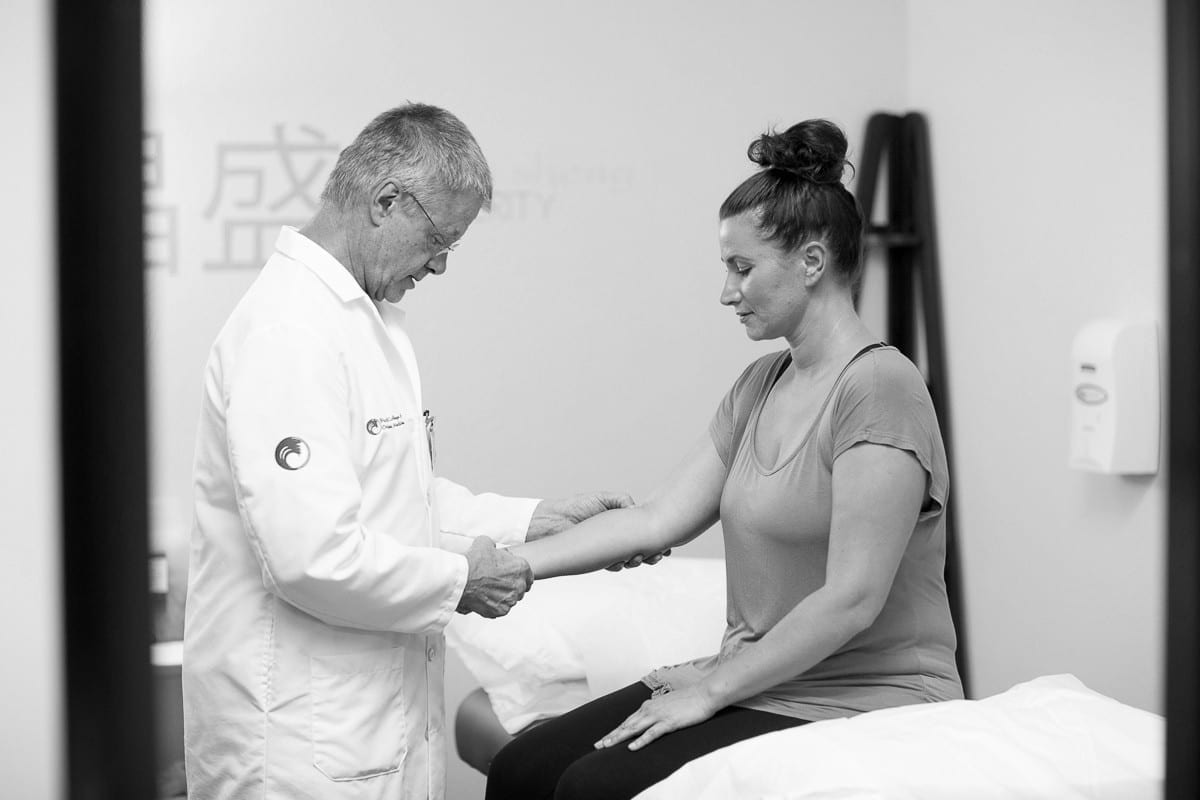“People ask you: what’s your level of pain?
Is it a 10?
What is a 10 that never goes away?
It’s still a 10.”
(Brunswick, 2015)
Death from overdose has quadrupled over the last seven years. However, despite common misconceptions, the vast majority of overdoses are not from illegal drugs, but prescription drugs. On an average day in the U.S., there are 62 deaths involving prescription opioids, resulting in 22,000 deaths per year (CDC, 2017). We are in the midst of an unprecedented opioid epidemic, leaving Americans that currently rely on prescription opioids to cope with the effects of chronic pain at significant risk of developing opioid-use disorders. But what is the solution, you may ask? Acupuncture.
Opioids are not an effective long-term pain management solution. By their very nature, prescription opioids should never be the first treatment option for chronic pain, as they are designed to primarily diminish the effects of acute pain. They do not treat the source of pain and are highly addictive. Opioids reduce the perception of pain in users by triggering the release of endorphins, thus activating the reward system of the brain and causing the user to subconsciously associate pleasure with opiate intake. Additionally, as users continue to take prescription painkillers, their bodies begin to produce and release fewer natural endorphins in order to overcompensate for the influx of endorphins from opiates. This results in users physically relying on opiates for their source of endorphins, as they no longer are able to produce them on their own, altering their nerve receptors and creating a dependency. Because of this, users will experience withdrawal symptoms if they abruptly stop using opiates, as they no longer produce enough natural endorphins to sustain them. This ultimately results in a high risk situation. Desperation arises when patients mask their symptoms rather than treating the source of their pain. This creates a double-edged threat, as patients have an increased risk of suicide and overdose as a method of coping with unrelenting pain.
Acupuncture as a Solution for Chronic Pain Management
While this epidemic certainly affects Americans as a whole, one group in particular is disproportionately affected by it: veterans. 60% of veterans are likely to suffer from chronic pain, double the rate found in the general American population (PBS, 2016). Many of these veterans seek treatment through VA hospitals’ pain management program. Due to restrictions on treatment options, veterans are consistently being prescribed opioids to cope with chronic pain, placing them at an increased risk of developing an opioid use disorder. A recent study conducted by researchers at the RAND Corporation, however, may provide VA hospitals with a set of recommendations that could reduce opioid use rates for patients within its healthcare system. (Watkins, Paddock, Hudson, Ounpraseuth, Schrader, Hapner, & Stein, 2017)
Are you interested in becoming a certified acupuncture professional?
Visit the links below to explore our specialized acupuncture programs at a campus near you:
Implementing Non-Addictive Pain Management
Watkins et al. (2017) at the RAND Corporation analyzed data from nearly 32,500 patients that were treated in VA facilities and identified as having an opioid use disorder. The researchers found a decrease in mortality rates among patients who were not prescribed medication, but instead received more personal therapy. They developed a series of “quality measures” that, when met simultaneously, decreased the mortality rate of addicted patients by 1/3:
- Not prescribed opioids or anxiety medication
- Received counseling
- Had regular visits with a VA physician
In addition, new guidelines from the American College of Physicians state that opioids should be the last resort for managing chronic pain, and instead patients should take non-pharmaceutical approaches, such as acupuncture and massage, to manage pain whenever possible. Yet with the limitations imposed by the current VA healthcare system, it is challenging to find a treatment option that incorporates these quality measures while still treating the source of patients’ pain (Samson, 2017). To combat this, the Acupuncture for Our Heroes Act was initiated.
On June 8, 2017, Rep Judy Chu [D-CA-27] introduced the Acupuncture for Our Heroes Act in the House of Representatives. If passed, this bill will provide veterans with access to acupuncture services through VA hospitals, which may provide relief amidst the opioid crisis (Constante, 2017). Not only does this solution fall within the framework provided by the RAND study and follow the guidelines recommended by the American College of Physicians, but it also treats the source of the patient’s chronic pain. Acupuncture is a non-addictive form of Chinese medicine where fine needles are inserted through the skin to cure diseases and relieve pain (American Academy of Medical Acupuncture, 2017). This results in a natural release of endorphins, meaning that patients will not experience withdrawal and will not have dependency to the treatment.
If this bill passes, implications for the future of pain management could be substantial. Based on the RAND study, there is great potential to significantly decrease mortality rate among addicted veterans just by using their guidelines. Adding acupuncture into the mix through the Acupuncture for Our Heroes Act provides even more treatment options that have the potential to drastically reduce the opioid epidemic.
Sources
American College of Physicians Guideline: Opioids Should Be … : Neurology Today. (n.d.).
Retrieved July 10, 2017, from http://journals.lww.com/neurotodayonline/Fulltext/2017/03160/American_College_of_Physicians_Guideline__Opioids.7.aspx
Constante, A. (2017, June 14). Bill to Provide Veterans With Acupuncture Access Introduced in House. Retrieved July 10, 2017, from http://www.nbcnews.com/news/asian-america/bill-provide-veterans-acupuncture-access-introduced-house-n772366
“DOCTOR, WHAT’S THIS ACUPUNCTURE ALL ABOUT?”. (n.d.). Retrieved July 10, 2017, from http://www.medicalacupuncture.org/For-Patients/Articles-By-Physicians-About-Acupuncture/Doctor-Whats-This-Acupuncture-All-About
Explore scientific, technical, and medical research on ScienceDirect. (n.d.). Retrieved July 10, 2017, from http://www.sciencedirect.com/
Opioid Overdose. (2017, February 09). Retrieved July 10, 2017, from https://www.cdc.gov/
VA’s new goal: Treat root causes of pain. (n.d.). Retrieved July 10, 2017, from http://www.startribune.com/the-new-goal-at-the-va-treating-the-root-causes-of-veterans-pain/311225971
Veterans Face Greater Risks Amid Opioid Crisis. (n.d.). Retrieved July 10, 2017, from http://www.pbs.org/wgbh/frontline/article/veterans-face-greater-risks-amid-opioid-crisis/
Featured Posts:

